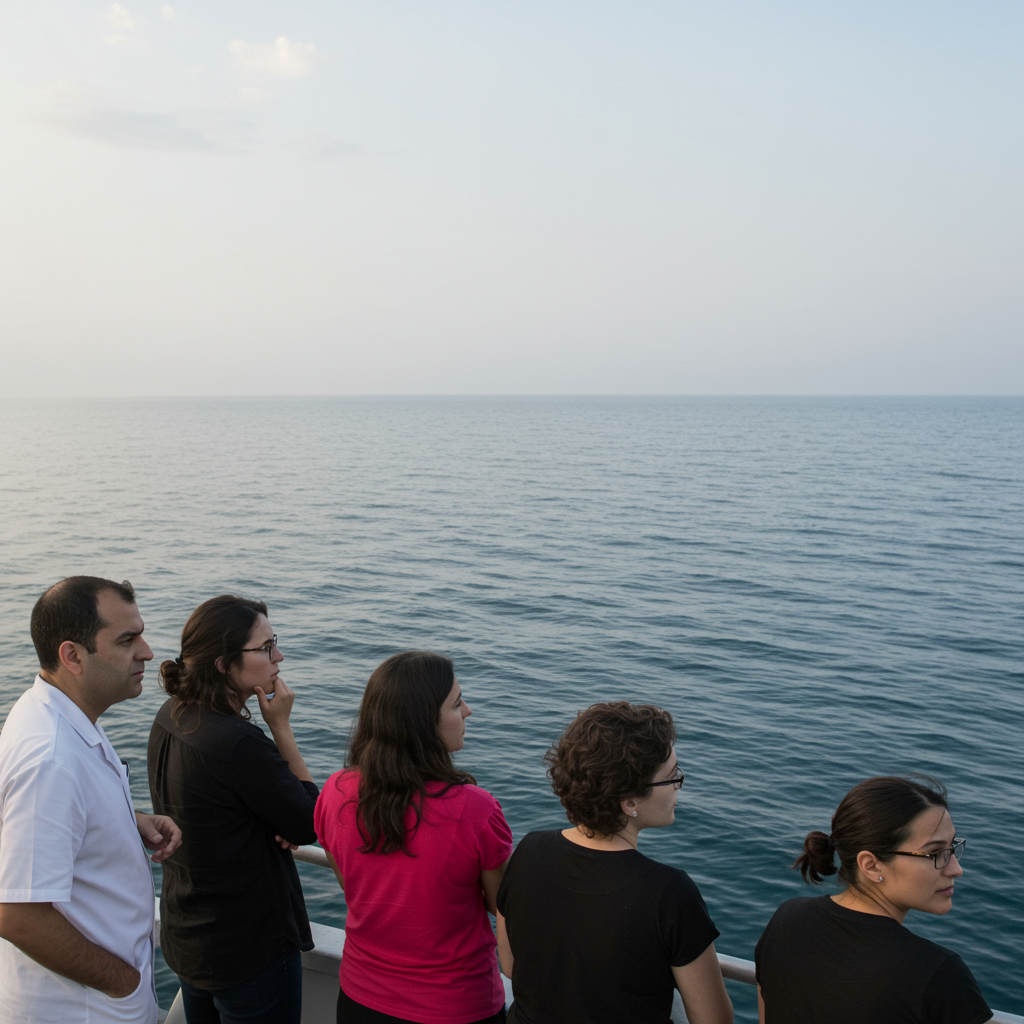While warm sea temperatures might seem ideal for a holiday swim, recent extreme heat in the Mediterranean Sea has triggered widespread alarm among scientists, who warn of potentially devastating consequences for precious marine ecosystems. This wasn’t just a few hot days; the intensity and duration of the warmth have marked a significant and worrying event.
In late June and early July, sea surface temperatures off popular coasts like Majorca repeatedly soared past 30°C. In some locations, this pushed temperatures an astounding six or seven degrees Celsius above typical levels for that time of year. To put that in perspective, these readings were warmer than most local swimming pools, which are usually kept around 28°C. Competitive pools are cooler at 25-28°C, while children’s pools might reach 29-32°C. Such comparisons highlight just how unusually hot the Mediterranean became.
An Unprecedented Event
Experts describe this period as the most extreme marine heatwave ever recorded for the western Mediterranean at this specific time of year. It affected vast stretches of the sea for weeks on end. The scale and timing of the event have led some scientists to label it potentially a “one-in-a-billion climatological event,” highlighting just how statistically unlikely such extreme temperatures are without significant external influence.
Jeff Berardelli, a chief meteorologist and climate specialist, noted peak temperature anomalies reached around +8°C off France and Italy. While absolute peak temperatures might reach 31°C in isolated areas, the crucial point is the massive deviation relative to the expected temperature for early July. Data from sources like the European Copernicus climate service confirmed these dramatic increases, with sea surface temperatures on June 22 measuring more than 5 degrees Celsius above the seasonal average in large areas.
Why This Heatwave is Different
High sea temperatures, sometimes reaching 30°C or above, are not unheard of in the Mediterranean later in the summer. However, their occurrence in June is highly unusual. Marta Marcos, an associate professor at the University of the Balearic Islands in Spain, explained that the early arrival of these 30°C temperatures signals potentially a much more intense and longer summer heat period for the sea.
This event is becoming part of a disturbing trend. Marine heatwaves globally are increasing in intensity and duration. Research indicates the number of days experiencing extreme sea surface heat worldwide has tripled over the past 80 years.
Climate Change and the Vulnerable Mediterranean
Scientists unequivocally link the growing frequency and severity of these events to human-caused climate change, primarily driven by burning fossil fuels like coal, oil, and gas. As Dr. Marcos simply put it, global warming transfers heat from the atmosphere directly to the ocean, making marine heatwaves a direct consequence.
The Mediterranean Sea is particularly susceptible to this phenomenon. Its semi-enclosed nature, often compared to a bathtub, limits the easy exchange of water with the vast open ocean. This means that under warm atmospheric conditions, coupled with sunny skies and light winds – conditions prevalent in June – the surface water heats up rapidly and the heat becomes trapped.
Karina von Schuckmann of Mercator Ocean International aptly calls the Mediterranean a “climate change hotspot” due to this unique vulnerability and its rapid warming rate compared to other ocean basins. While stronger winds after the peak heat in early July helped mix deeper, cooler water with the surface and bring temperatures down slightly, they remained significantly above average for the time of year.
Impacts on Marine Life
The most immediate concern is the potential impact on marine ecosystems. Most marine species have specific temperature thresholds beyond which they cannot survive. However, prolonged exposure to unusually high temperatures can also severely stress them, draining their energy reserves throughout the summer to a point where they can no longer cope, even if temperatures don’t immediately exceed lethal limits.
Emma Cebrian, an ecologist at the Centre for Advanced Studies of Blanes in Spain, shared a stark reminder of past events, recalling diving after a prolonged heat period four years prior and finding widespread skeletons of many marine populations. Seaweeds and seagrasses, which function much like forests underwater, providing essential habitats and capturing carbon, are particularly at risk. While some are adapted to typical Mediterranean warmth, they often cannot withstand the more extreme and widespread conditions brought by marine heatwaves.
The heat can also induce what ecologists term “sub-lethal effects.” This means species may not necessarily die immediately but go into survival mode, ceasing crucial activities like reproduction. This has significant long-term implications for population recovery and overall ecosystem health.
Wider Consequences
Beyond ecological damage, the heatwave poses risks to human societies. Dan Smale, a senior research fellow at the Marine Biological Association, warned that significant ecological impacts would “almost certainly” lead to losses in vital fisheries, affecting livelihoods and food security. He characterized the rapidly warming Mediterranean as a critical “canary in the coal mine” for observing the effects of climate change on marine life and broader ecosystems.
Excessive ocean heat also fuels extreme weather events on land. Warmer seas increase evaporation, adding more moisture to the atmosphere. This extra moisture can intensify rainfall if other atmospheric conditions are right, potentially leading to devastating floods, as tragically seen in Libya in 2023 and Valencia in 2024. Furthermore, warmer coastal waters can diminish the natural cooling effect of sea breezes, making coastal heatwaves on land more severe and uncomfortable for residents. Dr. Marcos expressed concern about the potential for another heatwave later in the summer, noting the combination with warmer seas could be “horrible.”
This unprecedented heatwave underscores the urgent need to address climate change. The events in the Mediterranean serve as a critical warning about the profound and far-reaching consequences of a warming planet, affecting not only delicate marine life but also human well-being and safety.
Frequently Asked Questions
What is a marine heatwave and why was this Mediterranean event considered extreme?
A marine heatwave is a period where ocean temperatures are significantly and persistently higher than the seasonal norm. The recent Mediterranean heatwave was extreme due to its timing – occurring unusually early in June – and its magnitude, reaching temperatures six to eight degrees Celsius above average in some places. Scientists called it potentially a “one-in-a-billion” event for this time of year, highlighting its unprecedented nature.
How does climate change contribute to marine heatwaves in the Mediterranean?
Climate change, driven by greenhouse gas emissions, transfers heat from the atmosphere into the ocean. The Mediterranean is particularly vulnerable because its semi-enclosed shape limits water exchange, trapping heat effectively. This makes it a “climate change hotspot” where temperatures rise faster than in more open oceans, increasing the frequency and intensity of marine heatwaves when warm air conditions are present.
What are the main impacts of this heatwave on Mediterranean marine life and human activities?
The intense heat stresses marine organisms, potentially causing widespread die-offs or “sub-lethal effects” like suppressed reproduction. This harms vital ecosystems like seagrass beds and threatens biodiversity. For humans, these ecological impacts can lead to significant losses in fisheries. Additionally, warmer seas contribute to more extreme weather events, including intense rainfall and hotter coastal land temperatures during heatwaves.



